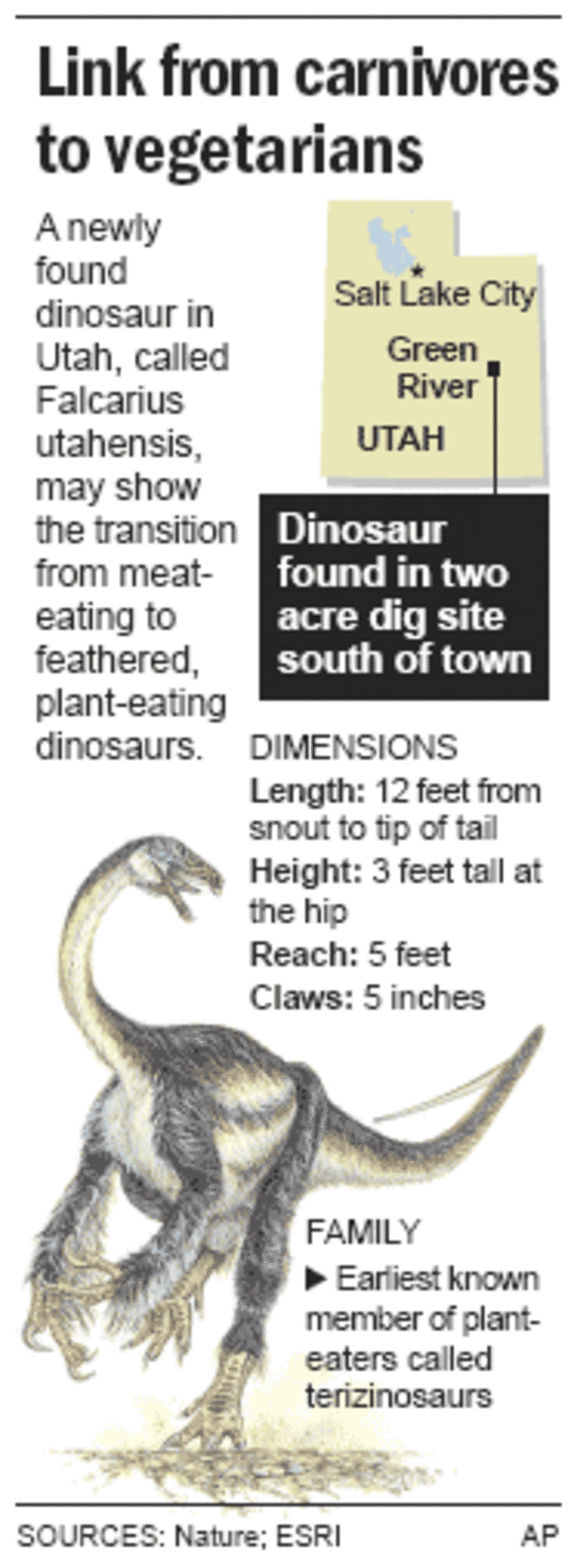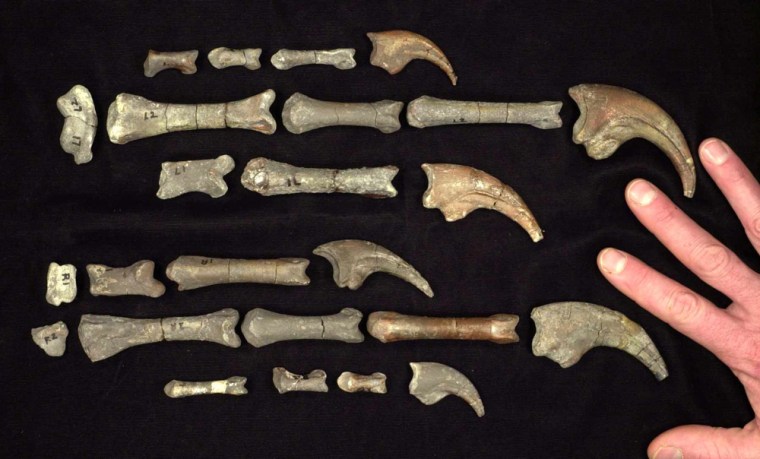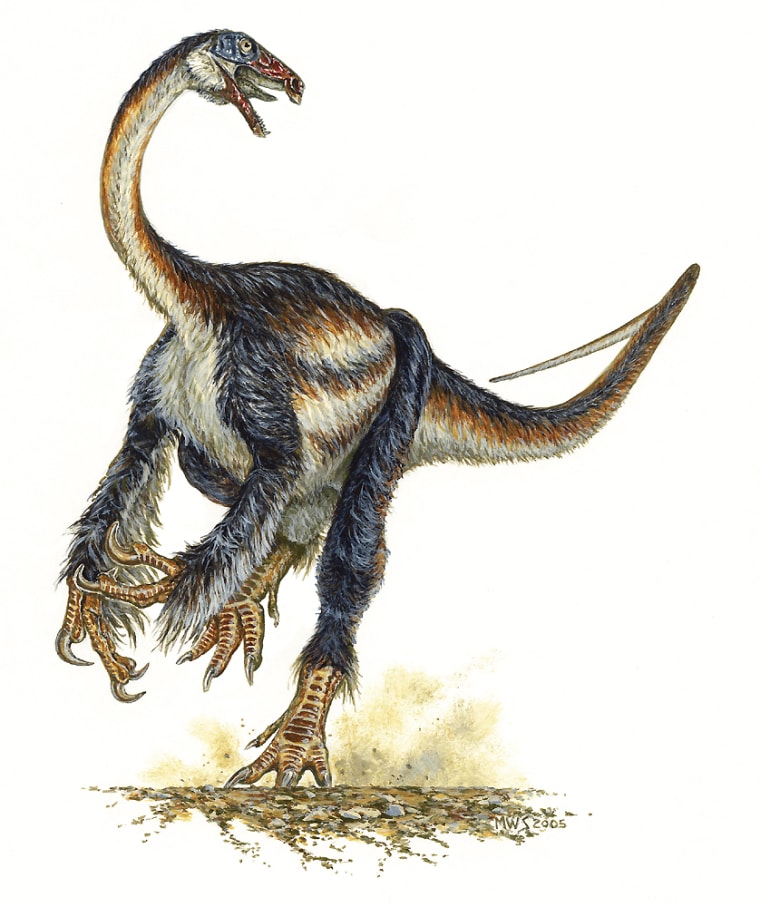Caught in the act of evolution, the odd-looking, feathered dinosaur was becoming more vegetarian, moving away from its meat-eating ancestors.
It had the built-for-speed legs of meat-eaters, but was developing the bigger belly of plant-eaters. It had already lost the serrated teeth needed for tearing flesh. Those were replaced with the smaller, duller vegetarian variety.
“I doubt seriously this animal could cut a steak with that mouth,” said Utah state paleontologist James Kirkland, one of those who discovered the bones of the beast in east-central Utah.
The scientists dubbed it Falcarius utahensis. Bones from hundreds or maybe thousands of these dinosaurs were discovered at a two-acre dig site south of the town of Green River. Nobody knows why they gathered there or what killed them, Kirkland said.
It ate plants, but its bones show the transition from its carnivorous ancestors while still in progress.

All plant-eating dinosaurs were ultimately descended from a meat-eater, and switchovers to plant-eating occurred several times. The newly discovered species, which lived 125 million years ago, could help scientists understand details of how the changeovers took place.
It’s “our first really good case of a dinosaur in the midst of shifting from the meat-eating body to a plant-eating one,” said an expert not involved in the discovery, Thomas R. Holtz Jr. of the University of Maryland.
“It’s definitely eating a substantial amount of plants, (but) we still see the original imprint of meat-eating upon it.”
The creature, with 5-inch claws on its outsized hands, measured some 12 feet from its snout to the tip of its long skinny tail. It stood just over 3 feet tall at the hip and could apparently reach about five feet off the ground with its long neck to munch leaves or fruit, said Kirkland.
He describes the creature in Thursday’s issue of the British journal Nature with Lindsay Zanno and Scott Sampson of the Utah Museum of Natural History at the University of Utah, among others.
They dubbed it Falcarius utahensis. Bones from hundreds or maybe thousands of these dinosaurs were discovered at a two-acre dig site in east-central Utah, south of the town of Green River. Nobody knows why they gathered there or what killed them, Kirkland said.

But analysis revealed that Falcarius was the earliest known member of a bizarre-looking group of plant-eaters called therizinosaurs (pronounced THAY-rih-ZY-no-sores.) Found mostly in Asia, the barrel-bodied creatures waddled upright like Godzilla or “a pot-bellied bear,” Kirkland said.
Falcarius, very early in its evolution into the therizinosaur body type, retained the rather horizontal posture and powerful legs of its meat-eating ancestors. And its teeth were more suited for eating plants, Zanno said.
It also showed some change toward the larger gut needed to digest plant material rather than meat, as well as a lengthened neck and smaller head associated with eating plants, she said.
Holtz said Falcarius still had fairly slender proportions overall rather than the barrel body of later therizinosaurs. “This one could probably move fairly quickly,” he said, whereas its more evolved relatives “would have had problems hunting things faster than a tree.”
Kirkland and Zanno said they suspect Falcarius probably ate some meat in addition to plants.
“I wouldn’t doubt this thing would eat a lizard or two in a pinch,” Kirkland said.
